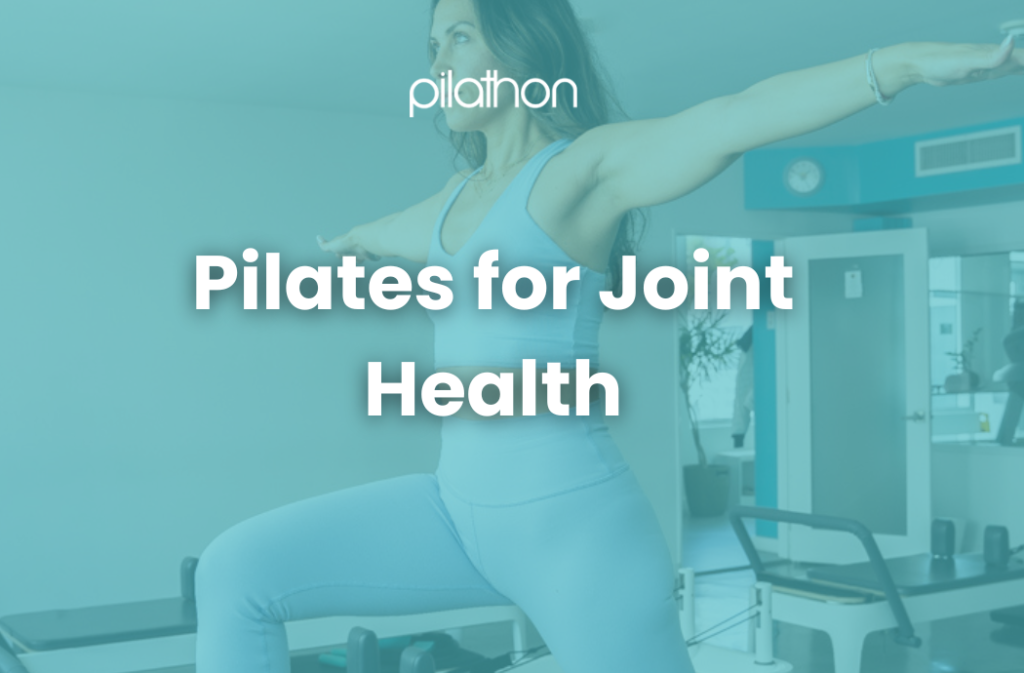Low-impact exercises are vital for maintaining healthy joints, especially as we age or recover from an injury. These types of exercises provide the benefits of strengthening, stretching, and improving flexibility without placing excessive strain on the joints, which can lead to damage over time.
Unlike high-impact activities such as running or jumping, low-impact exercises protect the body from wear and tear. This is crucial for anyone who suffers from joint pain or wants to preserve their joint health in the long term.
Among the most effective low-impact workouts is Pilates—it’s like giving your body a warm hug while strengthening your muscles and boosting joint mobility. It’s not just a workout; it’s your joints’ best friend. Pilates is one of the best exercises for joint care, and it does wonders without being too hard on your joints.
In this article, we will explore why Pilates is an ideal low-impact solution for joint health, explaining the science behind its benefits and how it can improve your overall well-being. Spoiler alert: your body will thank you!
Contents on this article
What Makes Pilates a Low-Impact Superstar?
Gentle on Joints, Effective on Muscles
Pilates offers a full-body workout that’s gentle on the joints yet incredibly effective at targeting the muscles. The exercises are designed to engage the muscles deeply without relying on fast, jarring motions that can harm the joints.
For example, while a squat in a traditional workout may involve quick movements that put pressure on the knees, Pilates exercises emphasize slow, controlled movements that allow muscles to engage properly, reducing the strain on your knees, hips, and spine.
Controlled, Precise Movements
One of the unique aspects of Pilates is its emphasis on precision and control. Each movement is executed slowly and deliberately, which reduces the potential for injury. Fast, uncontrolled movements can often place stress on the joints, especially in high-impact exercises.
However, Pilates encourages focus on alignment, technique, and breathing, helping practitioners maintain proper posture and alignment throughout each exercise.
This controlled approach is like having a safety net for your body—it minimizes the risk of overstretching or straining, especially around those precious joints. Think of Pilates as the thoughtful friend who always double-checks to make sure you’re comfortable, making it a top-notch option for anyone dealing with joint pain or stiffness.
Pilates for Joint Health: The Science Behind the Benefits
Strengthening Supportive Muscles
One of the most significant ways Pilates benefits joint health is by targeting and strengthening the muscles that support the joints. The muscles surrounding the joints play a crucial role in stabilizing and protecting them from damage.
In Pilates, exercises are designed to engage muscles like the glutes, quadriceps, hamstrings, and core, which are essential for joint support.
Improved Joint Mobility
In addition to strengthening muscles, Pilates also plays an essential role in improving joint mobility. The gentle stretching and controlled movements involved in Pilates help maintain and even increase the range of motion in the joints.
This is especially beneficial for individuals who suffer from stiffness or limited movement due to conditions like arthritis or joint degeneration.
Pilates movements involve gradual stretching and flexing of the joints, which helps to improve circulation and lubricate the joints, promoting joint health and flexibility.
Core Engagement and Joint Alignment
In Pilates, core engagement is emphasized in almost every exercise, whether on the mat or using equipment like the reformer.
A strong core helps improve posture and ensures that the body is properly aligned during movement.
For example, if your core is weak, you may inadvertently slouch or misalign your spine, which can sneakily pile on pressure to your lower back and hips.
Mental and Emotional Perks of Joint-Friendly Exercise
While the physical benefits of Pilates for joint health are clear, the practice also offers significant mental and emotional advantages.
Joint pain can often have a negative impact on mood and quality of life, leading to feelings of frustration, anxiety, and even depression. By alleviating pain, Pilates can improve overall well-being and enhance mental health.
Furthermore, Pilates is known for its mindfulness aspect, which encourages participants to focus on their breath, movements, and body alignment. This focus on mindfulness can help reduce stress, improve mood, and increase relaxation.
Conclusion: Long-Term Health Benefits of Pilates for Joint Health
Pilates is undoubtedly one of the best low-impact exercises for joint health. It strengthens muscles, improves joint mobility, enhances alignment, and reduces pain—all while being gentle on the body.
Whether you’re dealing with existing joint issues or simply looking for a way to preserve your joint health, Pilates is an excellent choice.
Ready to give Pilates a try? Join us at Pilathon in Little River or Wynwood, where you can experience the numerous benefits Pilates has to offer!
Our experienced instructors will guide you through tailored exercises that promote joint health and overall wellness. Start your Pilates journey today and take the first step towards a healthier, pain-free future!

